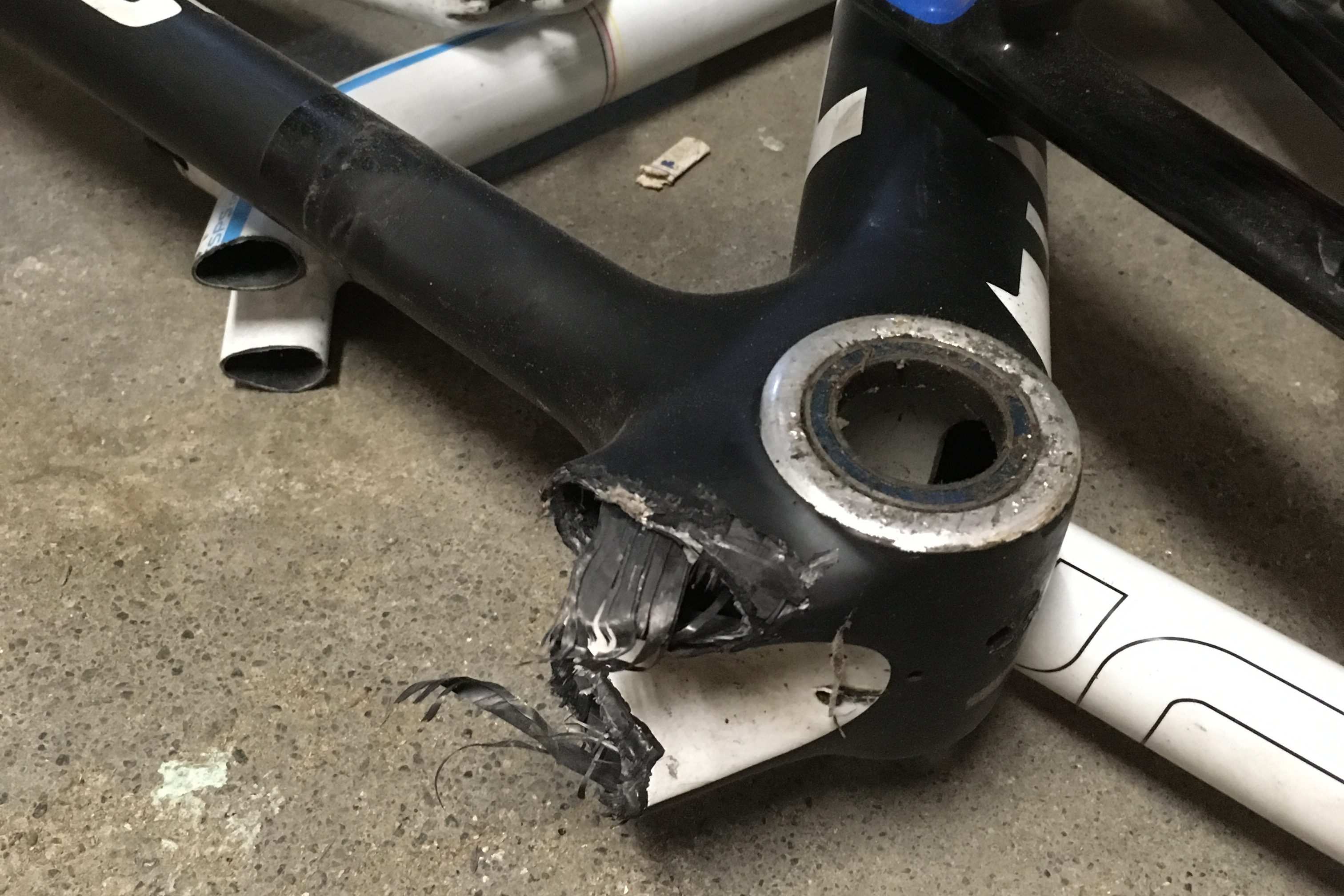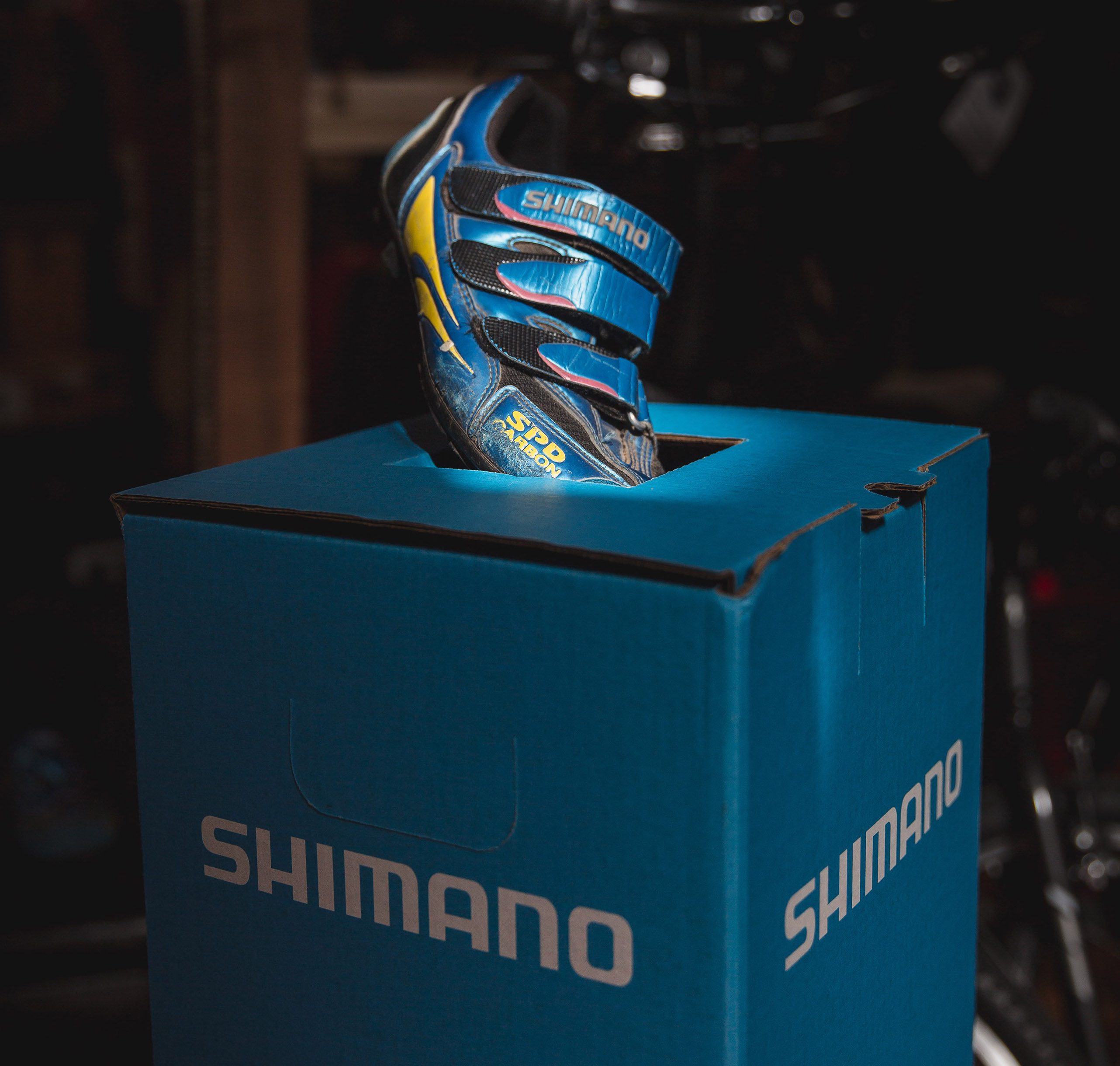TerraCycle pushes the limits of cycling related recycling
New Jersey company will recycle more than just carbon fibre soles of your shoes

When Shimano announced its program to collect old cycling shoes, in exchange for a discount on a new pair of shoes, we were curious. What happened to the old shoes?
Shimano’s partner in the recycling project, which concludes on Earth Day 2019, is TerraCycle. The Trenton, New Jersey-based company has its Canadian office in Toronto. It was founded in 2001 by Tom Szaky, a graduate of Toronto’s U.C.C., while he was a student at Princeton. The company produces goods and materials made from waste, focusing on non-recyclable pre-consumer and post-consumer waste.
RELATED: Trade in smelly old cycling shoes for a discount on a new pair with Shimano’s Earth Day initiative
I talked to Dr. Ernie Simpson, Global Vice President of R&D for TerraCycle about the shoe collection program and found out shoes aren’t the only cycling-related waste that can be recycled. The company, which has found a way to make use of the most unlikely kinds of waste, from dirty diapers to chewing gum, can handle much of the garbage created during your typical group ride. From plastic and foil energy gel wrappers all the way to carbon fibre frames and wheels of a high-end bike, TerraCycle can potentially redirect much of what we think of as fated for the landfill into useful materials.
TerraCycle: Beyond recycling Shimano shoes
Canadian Cycling Magazine: What happens to the collected cycling shoes after they’re dropped off at TerraCycle?
Dr. Ernie Simpson: We separate the uppers from the soles, and we use the rubber soles to make use for surfacing things like playgrounds. For the uppers we can use the leather to make leather tiles or for furniture, if it’s leather, or if it’s a plastic material, we’ll use it to make plastic tiles. So those are the kinds of applications we look at.
We do not incinerate anything that we collect, and we do not landfill anything we collect. Anything TerraCycle collects as a company we find solutions for. If we don’t have enough material to use it in an industrial setting, we will store the material until we get enough so that we can use it efficiently.
A lot of the cycling shoes have carbon fibre soles. Are you able to make use of that material?
Yes. The carbon fibre soles can be shredded and the carbon fibre can be used largely for reinforcing other materials. If the carbon fibre is well prepared, you can actually use that material in, for instance, in golf shafts, or you can actually use it in aerospace. A lot of aerospace plastic uses carbon fibre filling, and some automotive parts are made with carbon fibre fillings. Those are applications that we can look at for recycled carbon fibre.
A lot of products in the cycling industry are made with carbon fibre, including bike frames, wheels and small components. Is there a way shops or customers can send larger carbon fibre items to Terracycle as well?
Sure. Typically what we do is we take a sample in, and we analyze the composition of the sample and we’ll tell you if we have any difficulties trying to recycle that material. Carbon fibre, like all fillers – things like calcium carbonate, glass fibres – all of these are used in specific industry, though the general public may not know some of the specific applications that they go into.
We’ll take a sample in, analyze it to see what the composition is, see what kind of sizing the carbon fibre has. The sizing will tell us what kind of material it can be used in.
I’ve heard from the industry in the past that one of the reasons carbon fibre is hard to recycle is the type of resin used. Is that something you can get past?
Terracycle is a company that actually formulates. Most other recycles don’t formulate. They get a material and they’re hoping to recycle it as is. They’ll get a material that has carbon fibre in it, and they’ll grind it up and they won’t do anything else except maybe pelletize it and sell it as is.
What we do, is we actually formulate. If we need to add anything to the carbon fibre to facilitate it to be used in something else, we can do that. We do not simply get the material and grind it up and pelletize it and say there’s nothing else we can do. That’s not how we operate.
So you are making new material out of the recycled material?
Yes. We formulate it into new materials so that it can be used. That’s the way Terracycle operates. We can take materials, we can compatibilize them, add impact modifiers to make it more ductile, we can clean, wash and sterilize and do everything that’s necessary to produce a clean material, and we can do it to specification.
So let’s say somebody is using carbon fibre in an application. We will produce our material but, before we ship it to a company, we’ll ask for what they’re specifications are to see what they’re currently using and what is currently working for them. Then we formulate our material to meet that specification. So when it goes in to them, it can drop in to the production process as a replacement to new materials rather than having to troubleshoot the material we send them.
RELATED: From ghost fishing to green cycling gear: Axiom makes waves with Oceanweave
There’s a lot of single use plastics and foil that cyclists generate waste from, wrappers and such, that most municipal recycling facilities won’t accept. Does TerraCycle have a separate program for that type of waste?
All the wrappers you’re talking about we consider Number 7 plastic, which is multi-layer constructed films, candy wrappers, juice pouches, bottles that are multi-layer. When TerraCycle came into existence 10 years ago, Tom Szaky decided to concentrate on No.7 plastics because prior to us coming into the business all the No.7 plastics were either incinerated or buried in dump sites. One of the things we did was to create new processes for recycling No.7 materials. We’ve done that successfully. Some other things we’ve recycled include dirty diapers; chewing gum, cigarette filters, potato chip bags that are aluminized. All these materials that before were put in dump sites or incinerated, we found processes to run on them and use them in new applications.
What does the No.7 plastic end up as?
Because a lot of them are made with aluminum films, we do a lot of things like use them to make plastic lumber. Big industries are looking at trying to make lumber from plastic and there are a number of large companies that already do that. So we have created a lot of buzz with our No.7 plastic material in making, garden framings, outdoor benches and tables, collection bins for parks and rest areas. All of these can be outdoors for 25 years without having to paint them every afternoon and twice on Sundays, you know? They can withstand all kinds of environmental conditions and still look fairly decent when they’re maintained and cleaned up. That’s where a lot of No.7 plastic goes, and we’ve done that in a lot of countries from Europe to Canada, Mexico and Japan.
TerraCycle’s collection program is available across Canada through their Zero Waste Boxes. Consumers, retailers and event organizers can purchase the box, which covers the cost of inbound and outbound shipping and the cost of processing the material. There are Zero Waste Boxes for sporting goods, for plastic packaging, and even a special program for the pods, discs and capsules from your pre-ride coffee.


